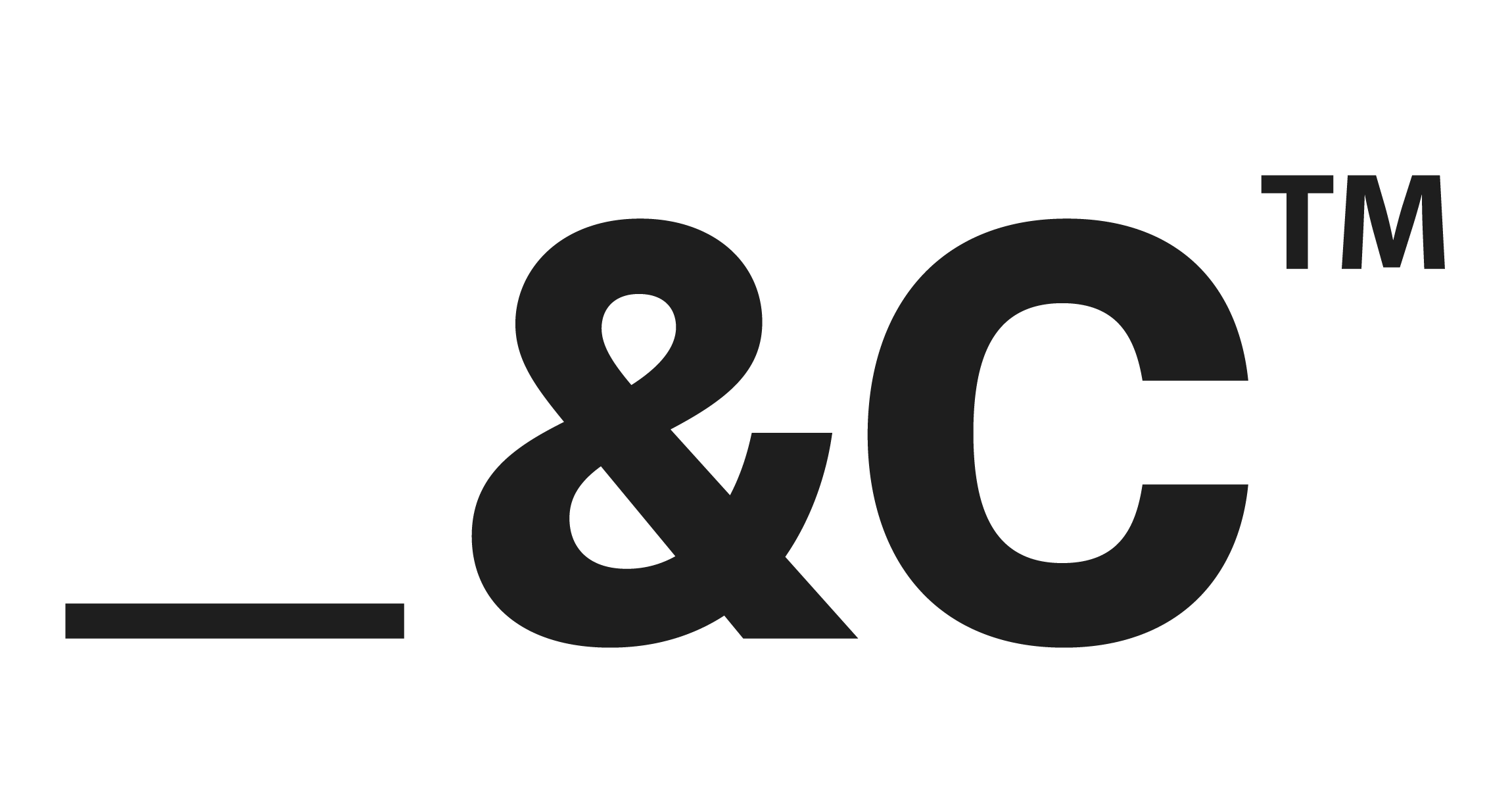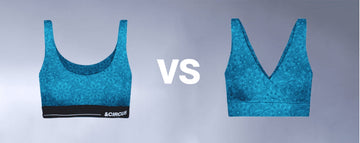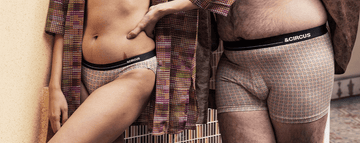Quick Listen:
One quiet revolution is stitching together trust one thread at a time. Picture this: a shopper in bustling Mumbai pauses over a vibrant kurta, not just for its pattern, but because the label whispers the story of its cotton grown without chemicals in a Rajasthan field, woven by artisans paid fairly. That whisper? It's fabric transparency, and it's reshaping how we shop, love, and loyalty to brands like AndCircus.
Uncomfortable underwear shouldn't steal your confidence. At Andcircus, we craft ultra-soft, sustainable Lenzing Modal Micro® innerwear for every body, XS to 5XL. From briefs to bras, our custom packs fit you perfectly. Shop risk-free with our 100% satisfaction guarantee and embrace comfort that includes everyone. #LoveEveryBody. Shop Now!
The Role of Transparency in Sustainable Fashion
Let's cut through the jargon. Fabric transparency isn't some corporate checkbox; it's the raw, unfiltered truth about where your clothes come from. As climate chaos creeps into daily life think Delhi's smog-choked winters or Kerala's flood-ravaged coasts shoppers are demanding more than vague "eco-friendly" tags. They want the full supply chain laid bare, from seed to seam.
For brands like AndCircus, rooted in India's vibrant textile heartlands, this means turning a differentiator into a dialogue. Their signature fabric mix blending organic cottons with recycled fibers doesn't just promise comfort; it invites scrutiny. Customers in Maharashtra or Tamil Nadu can trace those threads back to ethical mills, fostering a bond that's as durable as the fuss-free constructions AndCircus champions. In an industry notorious for opacity, this openness isn't optional; it's the glue holding fleeting trends to lasting loyalty.
Emerging Trends in Fabric Transparency
The numbers tell a story sharper than any runway show. According to a recent PwC survey of over 20,000 consumers across 31 countries, nearly nine in ten 85% have felt the sting of climate change firsthand, from erratic monsoons to scorching summers. Yet, amid inflation fears (31% see it as the top threat to their wallets), these same shoppers are ready to fork over 9.7% more for goods that scream sustainability. Groceries might eat up budgets 62% expect the biggest hike there but when it comes to fashion, ethics trump economics.
Zoom in on fabrics, and the shift accelerates. The sustainable fabrics market, valued at USD 37.26 billion in 2025, is barreling toward USD 115.72 billion by 2035, clocking a robust 12% compound annual growth rate. By 2026 alone, it's projected to hit USD 41.28 billion. Why the surge? Millennials and Gen Z, armed with apps and Instagram feeds, are ditching polyester pitfalls for bio-fabricated wonders materials grown from algae or mushrooms that slash water use and carbon footprints. Think UV-resistant blends for Gujarat's relentless sun or breathable, antibacterial weaves perfect for Hyderabad's humid hustle. These aren't lab fantasies; they're the new normal, with consumers in Uttar Pradesh or West Bengal scrolling Pinterest for brands that prove their green claims.
But it's not all seamless stitching. Social media amplifies the call: 46% of buyers now snag products straight from Instagram reels, up from 21% in 2019. For AndCircus fans following handles like @desouzamesty or @shainatanna, a quick story about traceable Tencel can seal the deal or unravel trust if it's missing.
Real-World Examples: Transparency in Action
Walk into AndCircu's digital showroom, and you'll spot it immediately: gender-agnostic prints that dance across kurtas and shirts alike, each backed by a clickable trail of certifications. No smoke and mirrors here. The brand partners with mills in Karnataka and Telangana, sharing supplier audits and fiber origins on product pages. It's a direct counter to objections like "too playful designs" because when you know the whimsy comes from low-impact dyes, playfulness feels purposeful. Customers aren't just buying clothes; they're investing in a narrative they can vouch for on Reddit threads or YouTube hauls.
Look beyond India, and giants like Patagonia echo the playbook. Their "Worn Wear" program doesn't just recycle; it maps every fleece's journey, turning skeptics into evangelists. Everlane, too, breaks down costs line by line USD 78 jacket? Here's the USD 26 for ethical cotton. These moves have spiked loyalty metrics, with repeat buyers citing transparency as the hook. In Delhi's malls or Benguluru's boutiques, AndCircus mirrors this by spotlighting limited retail presence with robust online traceability, easing doubts about performance-driven options in everyday wear.
It's tactile, too. Imagine unboxing a shipment to Haryana: a care card detailing how that breathable linen held up in ethical tests, complete with QR codes to farm photos. Small touches, massive impact converting one-time scrolls into lifelong fans.
Navigating the Shadows: Challenges in the Transparency Game
Full disclosure: weaving transparency isn't a straight shot from loom to loyalty. Traceability the art of tracking a garment from raw yam to rack demands tech upgrades and supplier buy-in, costs that hit smaller players like AndCircus hardest. Global chains sprawl across continents; pinning down every cotton boll in Uttar Pradesh while verifying dyes from Tamil Nadu? It's a logistical labyrinth, often ballooning expenses by 20-30%.
Then there's greenwashing, the industry's dirty secret. Brands splash "sustainable" labels without the receipts, eroding trust faster than acid washes jeans. As one fashion watchdog puts it, transparency means dishing clear info on origins, processes, and ethics no fine print. Consumers, savvier than ever via Facebook groups and YouTube exposés, sniff out fakes. For AndCircus, dodging this means rigorous third-party audits, but even they grapple with scaling digital presence to match the playful, inclusive vibe that draws in Kerala creatives or Gujarat professionals.
Yet these hurdles highlight the prize: authenticity over illusion. In a market flooded with knockoffs, proving your fabric mix is low-impact isn't boastful it's essential.
Unlocking Loyalty: The Business Edge of Open Books
Here's the payoff: transparency doesn't just satisfy; it seduces. When AndCircus lays bare its supply chain, it aligns with that inner compass shoppers carry especially in regions like Delhi or West Bengal, where urban hustle meets rising eco-awareness. Trust blooms: a PwC stat underscores it, with 85% of consumers prioritizing sustainable practices despite pinched pockets. That 9.7% premium? It's not charity; it's conviction.
In a crowded arena think Instagram feeds jammed with @taleofourtrails adventures or @gowrieparvathy's style tips AndCircus stands out. Gender-agnostic prints gain gravitas when tied to ethical sourcing, flipping "too playful" gripes into "perfectly me" endorsements. Fuss-free construction shines brighter against verified durability stats, addressing performance qualms head-on. The result? Loyalty loops: one transparent purchase sparks shares on YouTube, drawing in Pinterest pinners from Haryana to Tamil Nadu.
Business-wise, it's gold. Brands embracing this see retention rates climb 25-30%, per industry whispers. For AndCircus, expanding digital footprints means more than e-commerce spikes; it's community currency, turning objections into opportunities.
A Thread Worth Pulling: The Road Ahead
With sustainable fabrics swelling to USD 115.72 billion, fabric transparency isn't a trend it's the tapestry of tomorrow. Innovations like bio-fabrics will demand even deeper dives, but so will consumers, from Maharashtra millennials to Kerala kin. Experts predict regulatory nudges, like Europe's Digital Product Passport, will force the issue, rewarding the bold.
For brands hesitating on the edge, here's the nudge: start small. Map one fabric line, share the story unvarnished. AndCircus proves it works blending playfulness with proof, inclusivity with integrity. In the end, loyalty isn't bought; it's woven, thread by honest thread. Pull that one, and watch your brand endure.
Frequently Asked Questions
What is fabric transparency and why does it matter for sustainable fashion?
Fabric transparency refers to brands openly sharing detailed information about their supply chain, from raw materials to finished products, including fiber origins, manufacturing processes, and ethical practices. It matters because consumers are increasingly demanding accountability from fashion brands, with 85% of shoppers willing to pay 9.7% more for sustainable products. This transparency helps build trust and differentiates brands in an industry notorious for opacity and greenwashing.
How does fabric transparency increase customer loyalty and brand trust?
Fabric transparency builds loyalty by allowing customers to verify a brand's ethical claims and connect emotionally with the product's story. When brands like AndCircus share supplier audits, fiber origins, and manufacturing details, they create authentic relationships with consumers who can trace their purchases from farm to finished garment. This openness leads to 25-30% higher retention rates and transforms one-time buyers into brand evangelists who share their positive experiences across social media platforms.
What are the main challenges brands face when implementing fabric transparency?
The biggest challenges include high implementation costs (often 20-30% expense increases), complex supply chain mapping across multiple countries and suppliers, and the need for technological upgrades to track materials from raw yarn to retail. Additionally, brands must combat greenwashing perceptions by providing rigorous third-party audits and clear documentation. Smaller brands face particular difficulties scaling their digital presence while maintaining authentic transparency standards that savvy consumers can verify through social media and online research.
Disclaimer: The above helpful resources content contains personal opinions and experiences. The information provided is for general knowledge and does not constitute professional advice.
You may also be interested in: Personal Stories Illuminate Fashion Industry Changes
Uncomfortable underwear shouldn't steal your confidence. At Andcircus, we craft ultra-soft, sustainable Lenzing Micro Modal innerwear for every body, XS to 5XL. From briefs to bras, our custom packs fit you perfectly. Shop risk-free with our 100% satisfaction guarantee and embrace comfort that includes everyone. #LoveEveryBody. Shop Now!






































